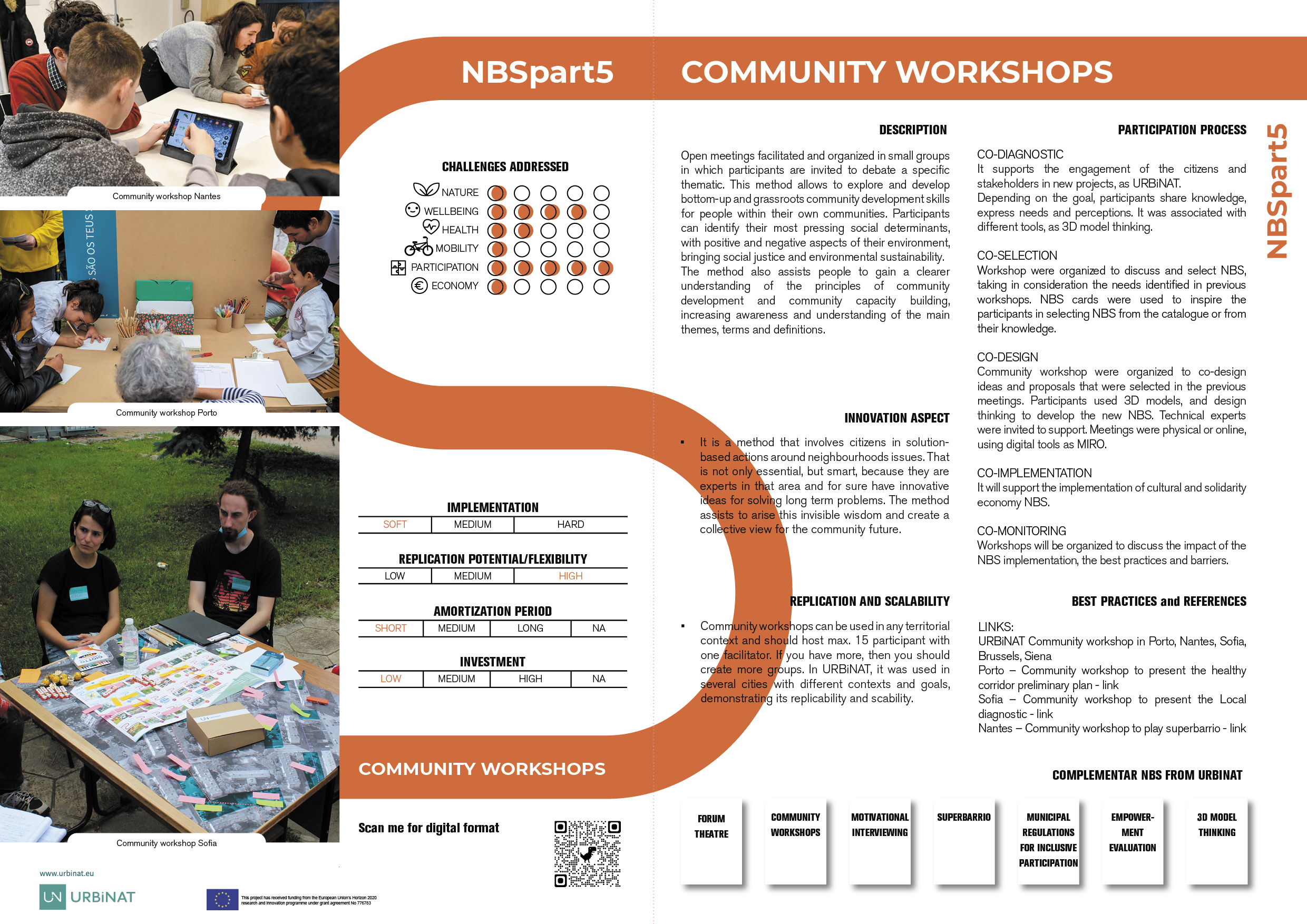Community Workshops
CHALLENGES ADDRESSED
Score impact
Nature
Wellbeing
Health
Mobility
Participation
Economy
DESCRIPTION
Open meetings facilitated and organized in small groups in which participants are invited to debate a specific thematic. This method allows to explore and develop bottom-up and grassroots community development skills for people within their own communities. Participants can identify their most pressing social determinants, with positive and negative aspects of their environment, bringing social justice and environmental sustainability. The method also assists people to gain a clearer understanding of the principles of community development and community capacity building, increasing awareness and understanding of the main themes, terms and definitions.

[PDF Download] Community Workshops
Open meetings facilitated and organized in small groups in which participants are invited to debate a specific thematic. This method allows to explore and develop bottom-up and grassroots community development skills for people within their own communities. Participants can identify their most pressing social determinants, with positive and negative aspects of their environment, bringing social justice and environmental sustainability. The method also assists people to gain a clearer understanding of the principles of community development and community capacity building, increasing awareness and understanding of the main themes, terms and definitions.
INNOVATION ASPECT
• It is a method that involves citizens in solutionbased actions around neighbourhoods issues. That is not only essential, but smart, because they are experts in that area and for sure have innovative ideas for solving long term problems. The method assists to arise this invisible wisdom and create a collective view for the community future.
REPLICATION AND SCALABILITY
• Community workshops can be used in any territorial context and should host max. 15 participant with one facilitator. If you have more, then you should create more groups. In URBiNAT, it was used in several cities with different contexts and goals, demonstrating its replicability and scability.
PARTICIPATION PROCESS

-
1
CO-DIAGNOSTIC
It supports the engagement of the citizens and stakeholders in new projects, as URBiNAT. Depending on the goal, participants share knowledge, express needs and perceptions. It was associated with different tools, as 3D model thinking.
-
2
CO-SELECTION
Workshop were organized to discuss and select NBS, taking in consideration the needs identified in previous workshops. NBS cards were used to inspire the participants in selecting NBS from the catalogue or from their knowledge.
-
3
CO-DESIGN
Community workshop were organized to co-design ideas and proposals that were selected in the previous meetings. Participants used 3D models, and design thinking to develop the new NBS. Technical experts were invited to support. Meetings were physical or online, using digital tools as MIRO.
-
4
CO-IMPLEMENTATION
It will support the implementation of cultural and solidarity economy NBS.
-
5
CO-MONITORING
Workshops will be organized to discuss the impact of the NBS implementation, the best practices, and barriers.
Best Practices and References
LINKS:
URBiNAT Community workshop in Porto, Nantes, Sofia, Brussels, Siena
Porto – Community workshop to present the healthy corridor preliminary plan – link
Sofia – Community workshop to present the Local diagnostic – link
Nantes – Community workshop to play superbarrio – link










